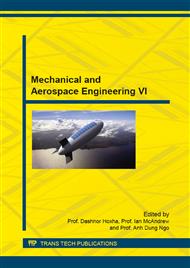p.125
p.129
p.135
p.140
p.148
p.155
p.160
p.165
p.170
Modal Analysis as the Base of Dynamic Analysis
Abstract:
The article deals with the modal analysis as a tool for specification of natural frequencies and the mode shapes of the turning tool. This type of analysis is the first step that is necessary to do at the dynamic analysis of technical components. At the beginning, the verification of numerical method was realized in laboratory conditions, where the fixed beam substituted the turning tool. Vibrodiagnostics of the real cutting tool in the workshop and the modal analysis using FEM in the software PTC Creo followed. It can be said that the results of the numerical method based on FEM were comparable with the data achieved by means of experimental measurements. The work described in this paper can be considered as a foundation for the dynamic tool life analysis.
Info:
Periodical:
Pages:
148-152
Citation:
Online since:
October 2015
Authors:
Keywords:
Price:
Сopyright:
© 2015 Trans Tech Publications Ltd. All Rights Reserved
Share:
Citation:


